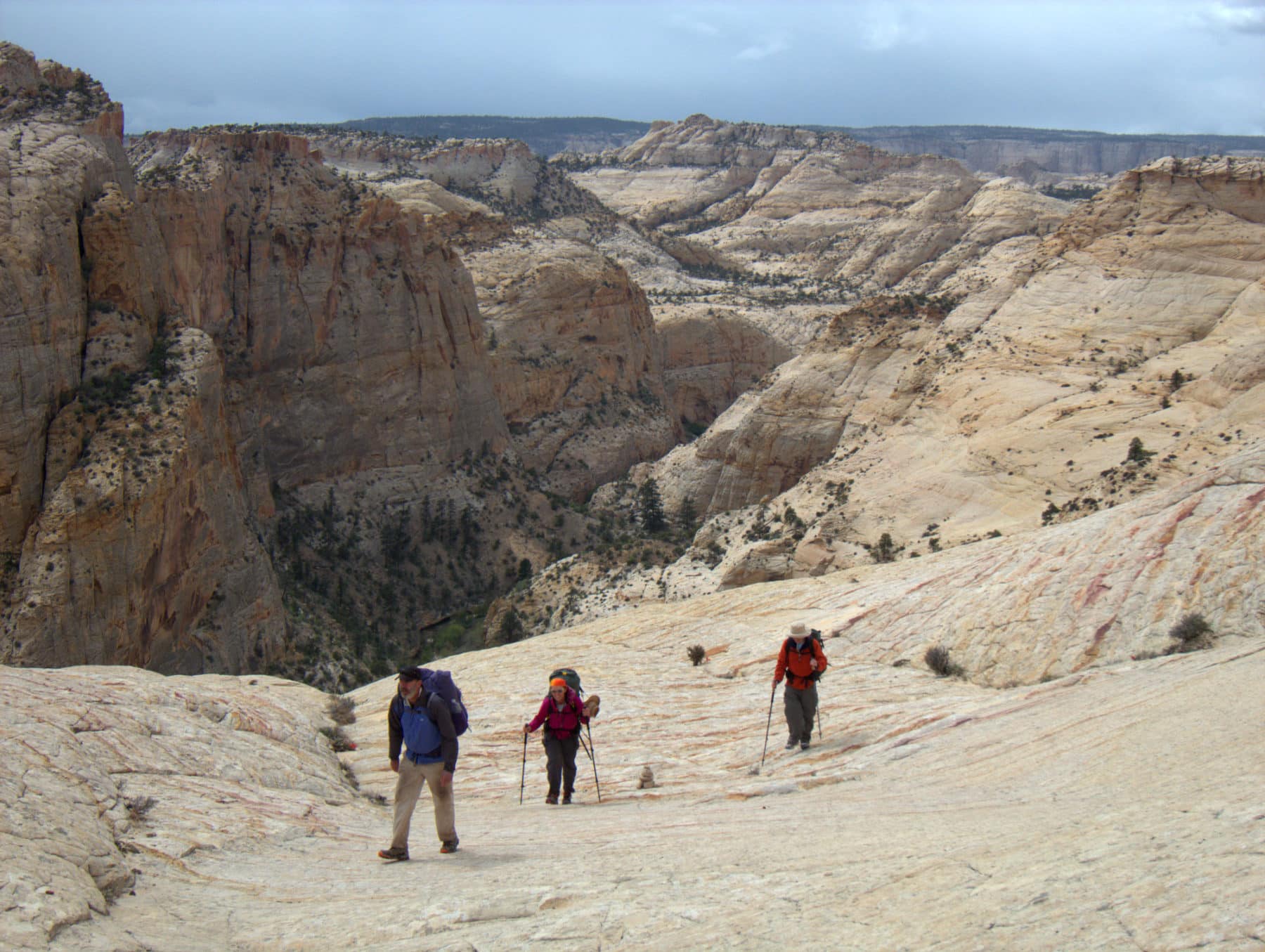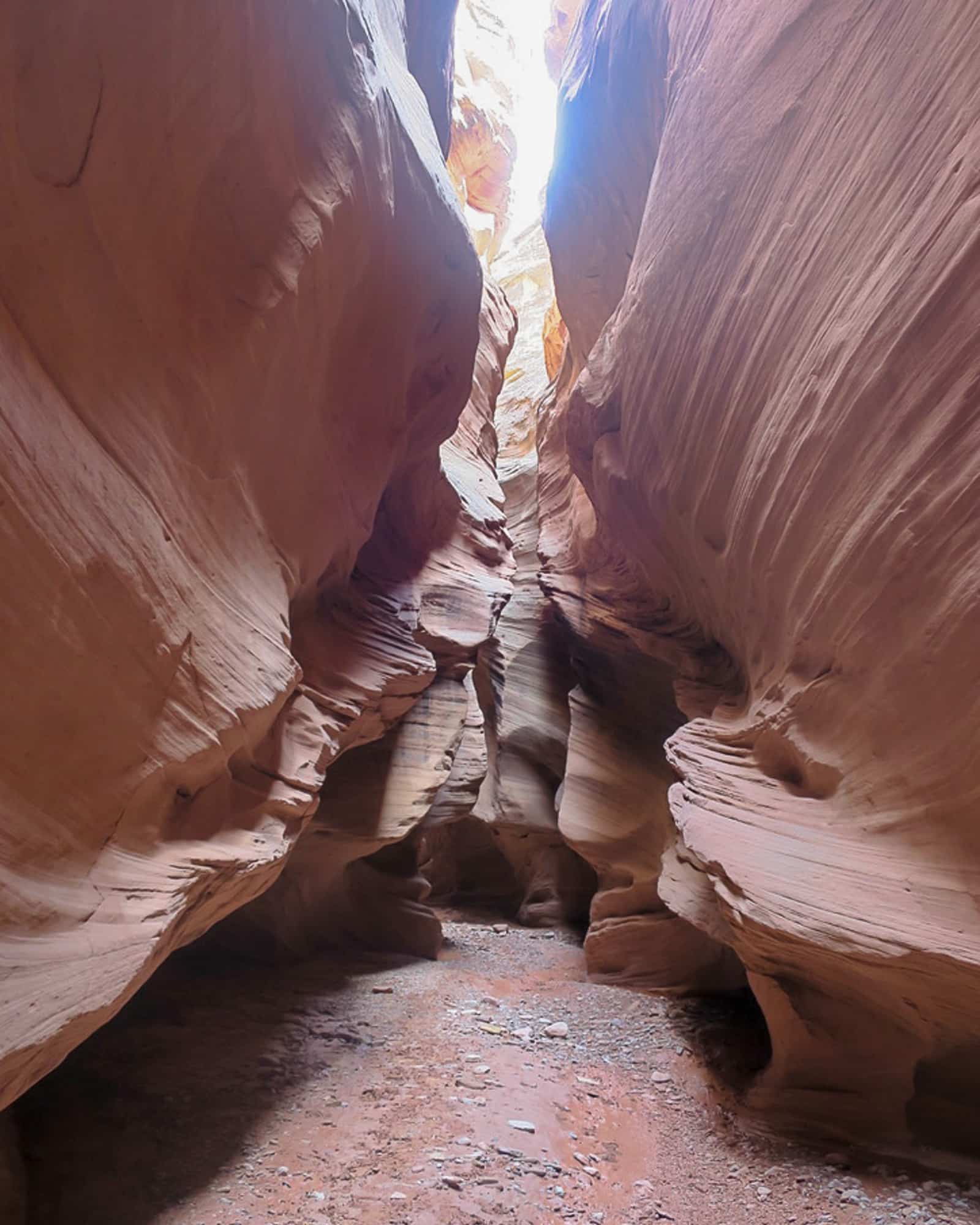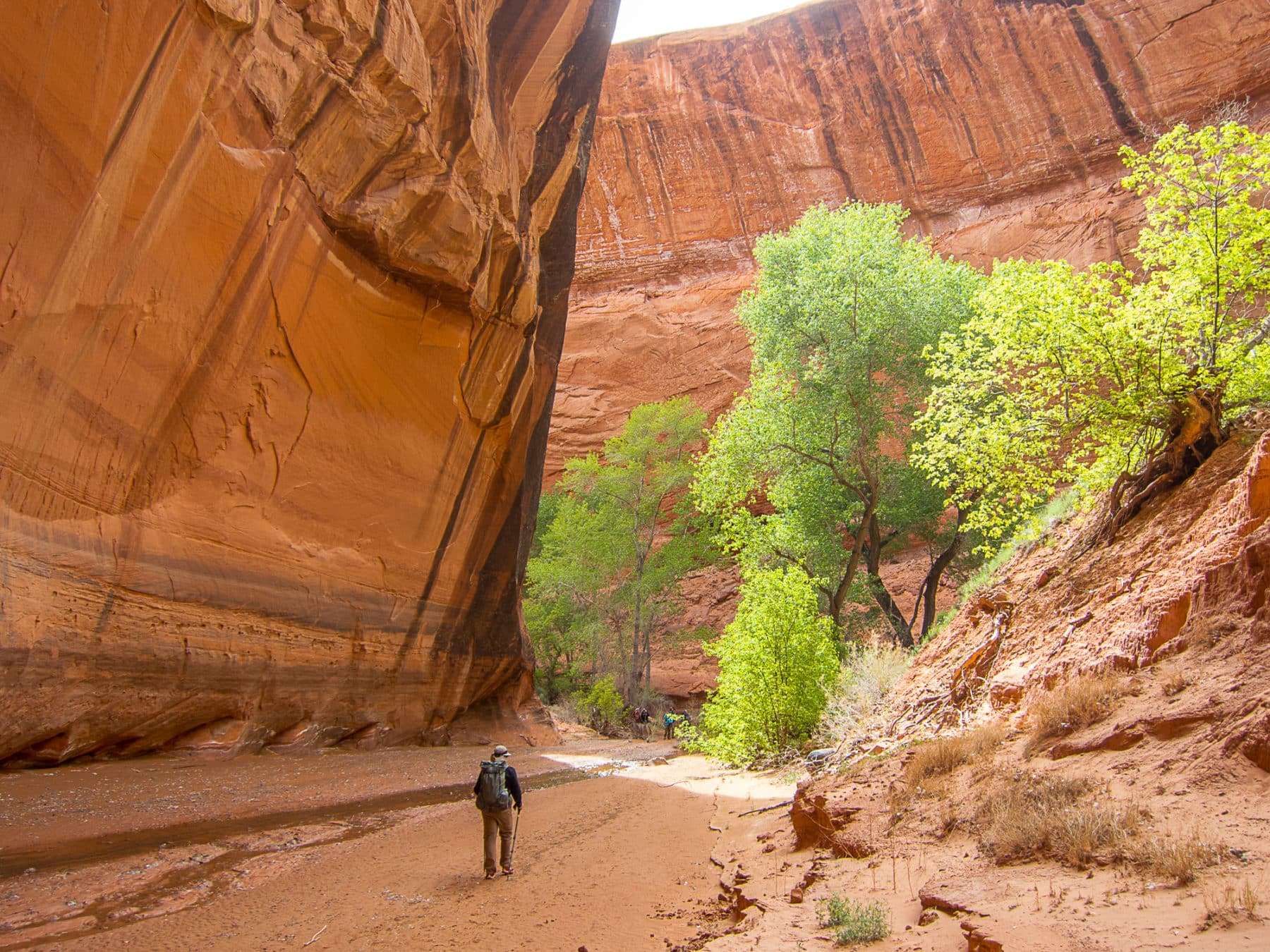- 1/Fundamentals
- 2/Adventure
- 3/Canyoneering
- 3/Expedition
- First Aid
- 1/Beginner
- 2/Intermediate
- 3/Advanced
Technical "Spiciness" of trips
- A/Mild
- B/Medium
- C/Hot
Timing: April-May
Client ratings of this location:
- 2025: 4.85/5.0
- 2024: 4.97/5.0
- 2023: 4.87/5.0
- 2022: 4.81/5.0
- 2021: 4.74/5.0
- 2020: 4.81/5.0
In southern Utah we follow canyon bottoms, scramble across slickrock, traverse sandy benches, and pass by ancient rock images along the Escalante River, a perennial tributary of the Colorado River that flows into Lake Powell. This area is a gem of the Colorado Plateau, but it thankfully lacks the hordes of tourists that swamp other locations like Grand Canyon, Zion, and Arches National Parks.
Our operating area is managed as Grand Staircase-Escalante National Monument and Glen Canyon National Recreation Area. Its 300,000 acres makes it about 40 percent of the size of Rhode Island. Needless to say, we have ample room to roam and explore here.
Our groups meet in the adorably quaint town of Escalante. For the duration of your trip, you will not cross a road or encounter a wheeled vehicle, and you probably will not see many (or any) other groups during the middle of the trip when we’re the furthest out.
The area has only one established hiking trail and only a few use trails, so we will often (or always) be off-trail. Most routes are non-technical (i.e. climbing ropes, harnesses, and hardware are not required), but may have sections of Class 3 or Class 4 scrambling where a hand-line or pack-haul is helpful or necessary. Guides are expected to modify the route to suit the interests and abilities of their groups.
The Colorado Plateau is a unique environment, and thus has a host of unique challenges. We’ll help you learn to manage water, navigate in deep canyons and across featureless benches, find breaks between the geological layers, and cowboy camp under the stars.
Late-April and early-May is prime time in southern Utah. The temperatures are mild, the vegetation is vibrant green, water sources are reliable (though not abundant), and the weather is consistently friendly.
While this landscape is mostly flat, many of its miles are hard-won. The canyon bottoms are slow, especially if they are brushy or water-filled; and the benches above are covered in deep sand and are mostly shade-less.
In this location we contend with fewer logistical or regulatory limits on our use, so we can make room for nearly every qualified applicant. As a result, Utah is worth consideration at least as a Second Choice because we can’t accommodate all the demand in other popular locations like Alaska and the High Sierra.
What we like
- Extensive off-trail travel
- One-of-a-kind geology and landforms
- Springtime conditions (mild temps, budding leaves, blooming wildflowers)
- Dry weather, cowboy camping, and light packs
- Rich archeological evidence
What we dislike or are challenged by
- Fine-grained “blow sand” that reduces walking speed
- Steeply angled slickrock slabs or vertical ledge systems that may require scrambling, handlines, pack hauls, or body assists on more physically aggressive trips
- Dry, shade-less, and sand-covered benches between the canyons
- Occasionally strong springtime winds





